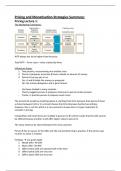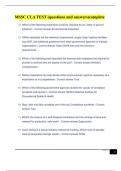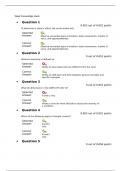Summary
Pricing and Monetization Strategies Summary
- Course
- Institution
This is a summary of all lectures and guest lectures given for the course pricing and monetization strategies. It includes all slides from class, notes, and answers to questions from the slides. Such as, conjoint analysis, ultimatum game, value based pricing, demand function, profit maximisation, p...
[Show more]












